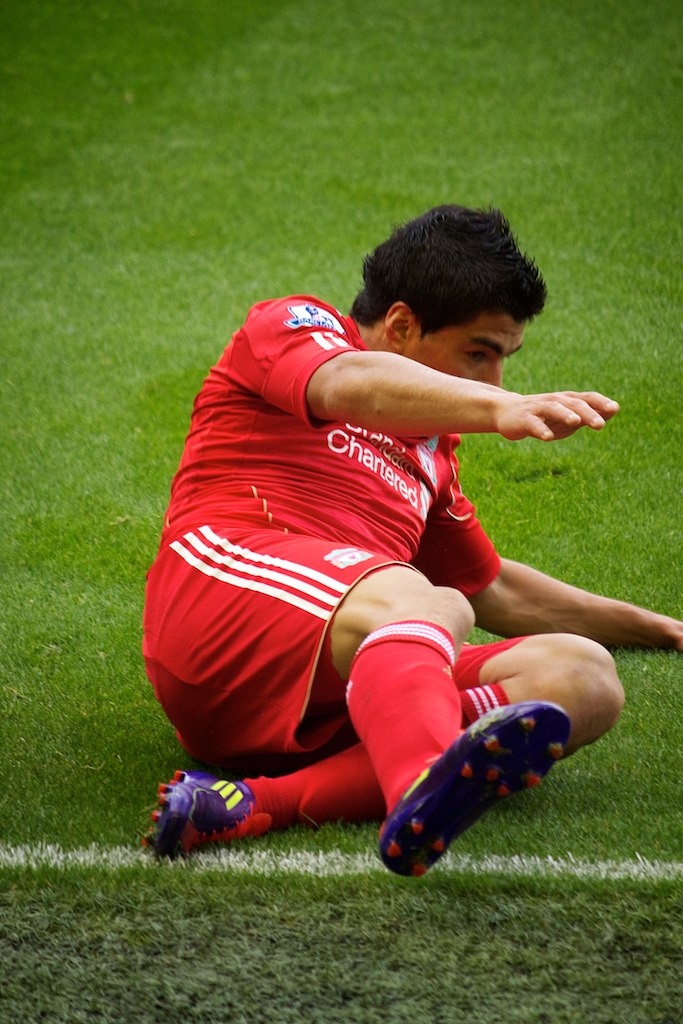Telecoms.com talks to Andrew Robinson, head of digital media and tech at Liverpool Football Club about the decision to make wifi connectivity available to fans in its its Centenary stand and the revenue benefits that the club expects to derive from the installation.
May 1, 2013

Liverpool FC, a team that dominated English football in the 1970s and 1980s, is looking to become a champion of mobile internet service provision.
The club has recently deployed a wifi network in the Centenary Stand of its Anfield stadium, to allow fans an easier and more reliable method to access match information as well as wider online content. Telecoms.com caught up with Andrew Robinson, Liverpool FC’s (LFC) head of digital media and tech, to find out more.
Robinson explains that the club used technology from wifi network specialist Xirrus for the pilot project. Xirrus provided a number of its Wireless Array access points, each of which allows over 1,000 wireless users to connect to its wifi networks. But before they could be deployed it was necessary for LFC to upgrade its core backbone infrastructure.
“The network infrastructure in the stadium was not as up to date as it might be,” Robinson explains. “This is because Liverpool FC has been in a ‘do we or don’t we?’ situation regarding a move to a new stadium. But when we decided to install a wifi network we had to do some work on core infrastructure.”
Robinson said that the network offers full wifi coverage across the centenary stand and the club has built a user experience layer, to promote content the club believes will get fans excited.
“We’ve made the solution quite open from day one, we’re not controlling exactly where people can go, the standard “bad content” locking aside, but we’ve populated the experience layer with match stats, a range of food and drink offers, the ability to tap into social media and the ability to place bets on the game with our partner Paddy Power. The challenge now is to monitor how good the experience is and improve it accordingly.”
Robinson acknowledges that building a wifi network is not the only way to improve fans’ access to the web from the stadium. He reveals that the club has considered capitalising on the existing relationships it has with mobile operators to enhance cellular coverage within the stadium.
“We’ve talked to a range of operators about a range of solutions and we’ve worked with mobile operators all around the world on content distribution,” he says.
“From a network perspective, we looked at the potential to enhance the cellular coverage at the ground as well to provide better voice and data services within the stadium, but there were issues in terms of the dense space within the stadium, the power requirements, other priorities and projects. It’s not something we’ll necessarily rule out.”
Robinson added that wifi was more attractive as the club had been looking to improve data connectivity within the stadium, rather than voice. In addition, offload to wifi should free up capacity on the cellular network, making it easier for fans to use it for core communication services.
Access to the wifi network will initially be free for fans in the Centenary stand, although this does not necessarily mean the club will not charge for wifi access in the future. In fact, Robinson says the club may build in functionality such as a direct micropayment linked to ticket types.
“If you take video replays as an example, there may be a layer in the service to charge extra for that, and differentiate between general access and restricted access.”
Robinson acknowledges that Xirrus was attractive because it was one of the more cost effective solutions on the market but he adds that another benefit the firm offers is the way the network pushes a lot of the technology to the array itself, meaning the club can minimise cable runs. Robinson explains that as Anfield is not a modern stadium, he faced many challenges with space and complexity. Therefore, the ability to minimise cable runs reduces installation costs.
The club also hopes to drive improvements in its customer relationships. “The beauty of this kind of project is that you can gain benefits in all sorts of areas,” Robinson says. “The starting point is the fans; we get data we didn’t have, particularly from those in the hospitality areas, as we don’t always know who those people are.”
And, even if the wifi remains free of charge to fans, it is hoped that it could drive spend in other areas. “Wifi connectivity could also mean people arriving at the ground earlier and if they arrive earlier, there’s potential that they’ll consume more food and drink, especially as there is an incentive through the special offers within the application layer we’ve created. There’s also exposure for our partners and sponsors, and then there’s future potential with micropayment transactions.”
Perhaps more than anything, though, wifi is just a hygiene factor for today’s sports crowds.“Wifi is increasing becoming commodity – people expect it,” says Robinson. “Not providing wifi is not going to make people stop going to Anfield, but people increasingly just expect these sorts of things, it is just part of their in-venue experience.”
Read more about:
DiscussionAbout the Author(s)
You May Also Like








.png?width=300&auto=webp&quality=80&disable=upscale)


_1.jpg?width=300&auto=webp&quality=80&disable=upscale)


.png?width=800&auto=webp&quality=80&disable=upscale)